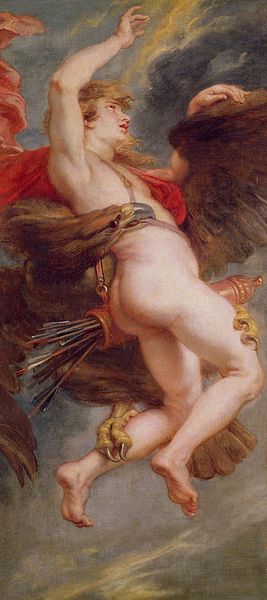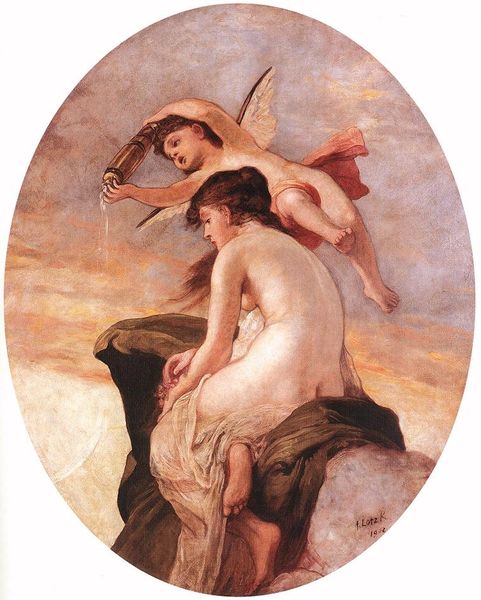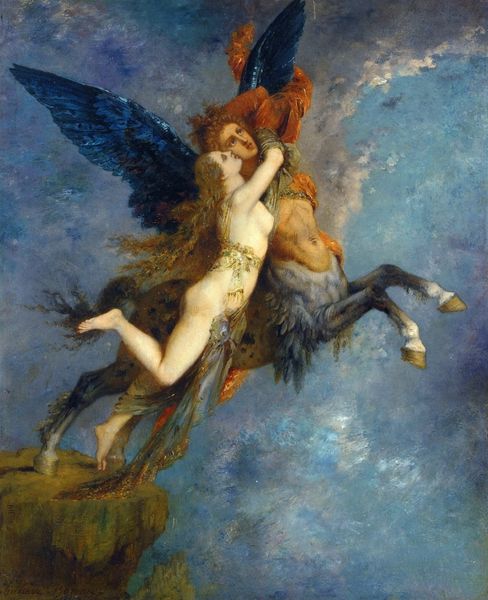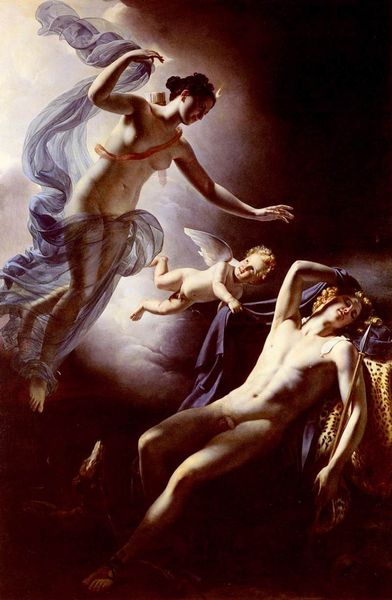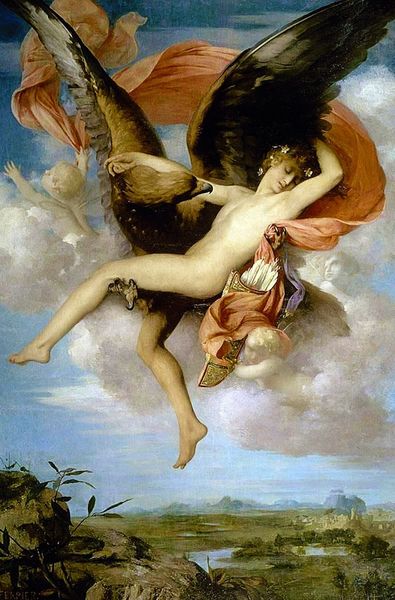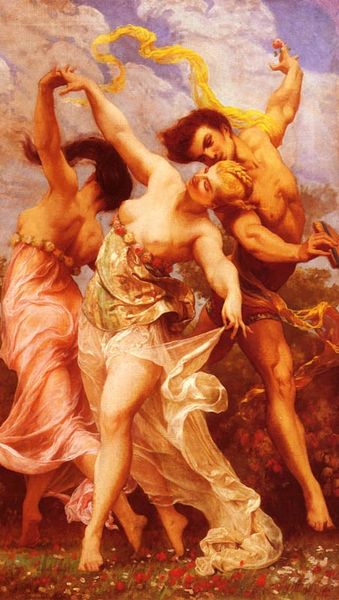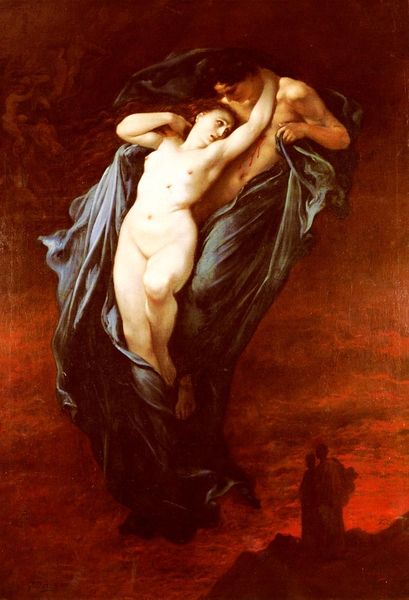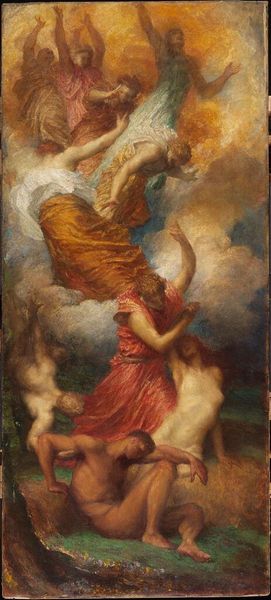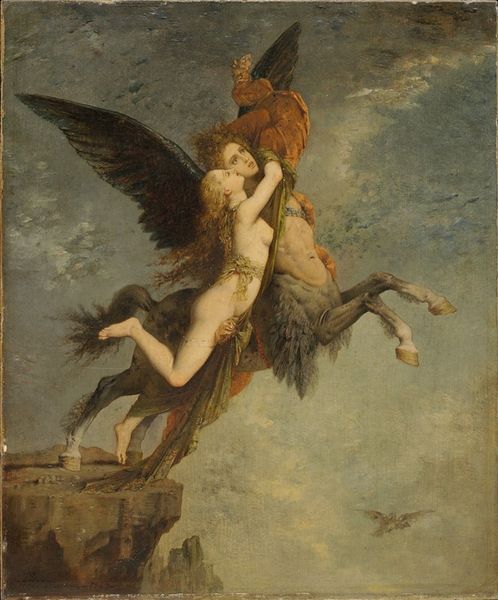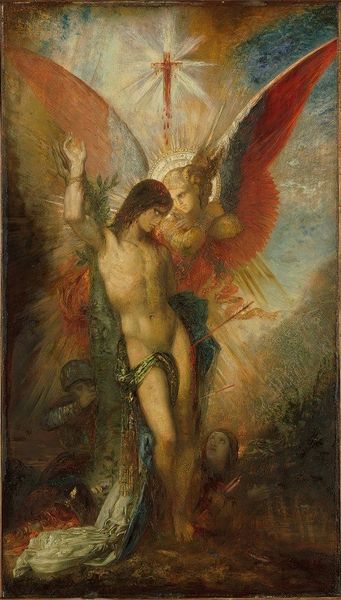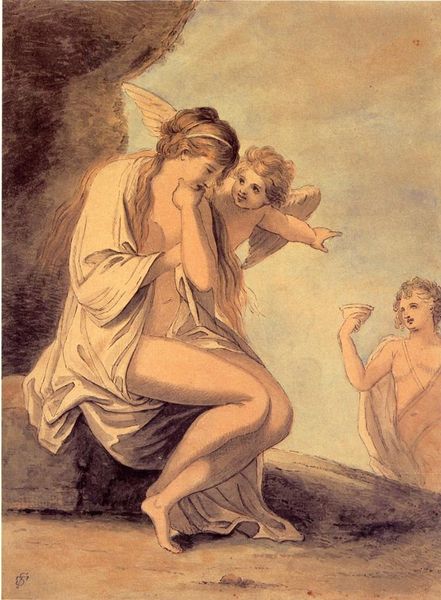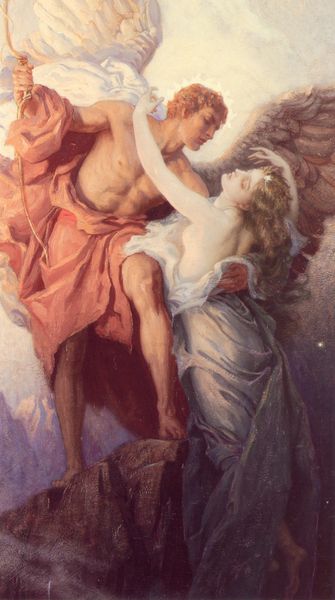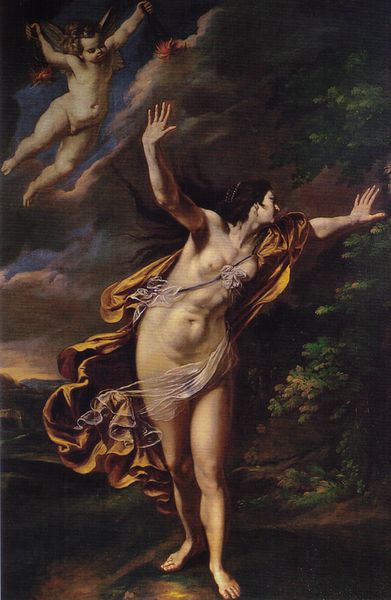
Copyright: Public domain
Károly Lotz painted 'Muse (Amor and Psyché)' sometime in the late 19th century, reflecting the artistic and cultural values of the Austro-Hungarian Empire. Lotz, who came from a family of German actors, was known for his murals, history paintings, and his ability to move between the different genres and subjects in the art world of his time. Here, Lotz invokes a classical theme with a Neoclassical style that was still very popular. We see the nude figures of Amor, reaching for the harp, and Psyché, the muse, gazing adoringly at him. While the subjects may be timeless, the way they are depicted reflects 19th-century ideas about beauty and sexuality, with both figures idealized in a way that was very particular to that era. The artwork uses an ancient myth to explore contemporary ideas about the creative process and the relationship between love and inspiration. It invites us to think about how artists have historically used classical themes to reflect their own cultural values, and how the beauty standards of a time can impact its art.
Comments
No comments
Be the first to comment and join the conversation on the ultimate creative platform.
